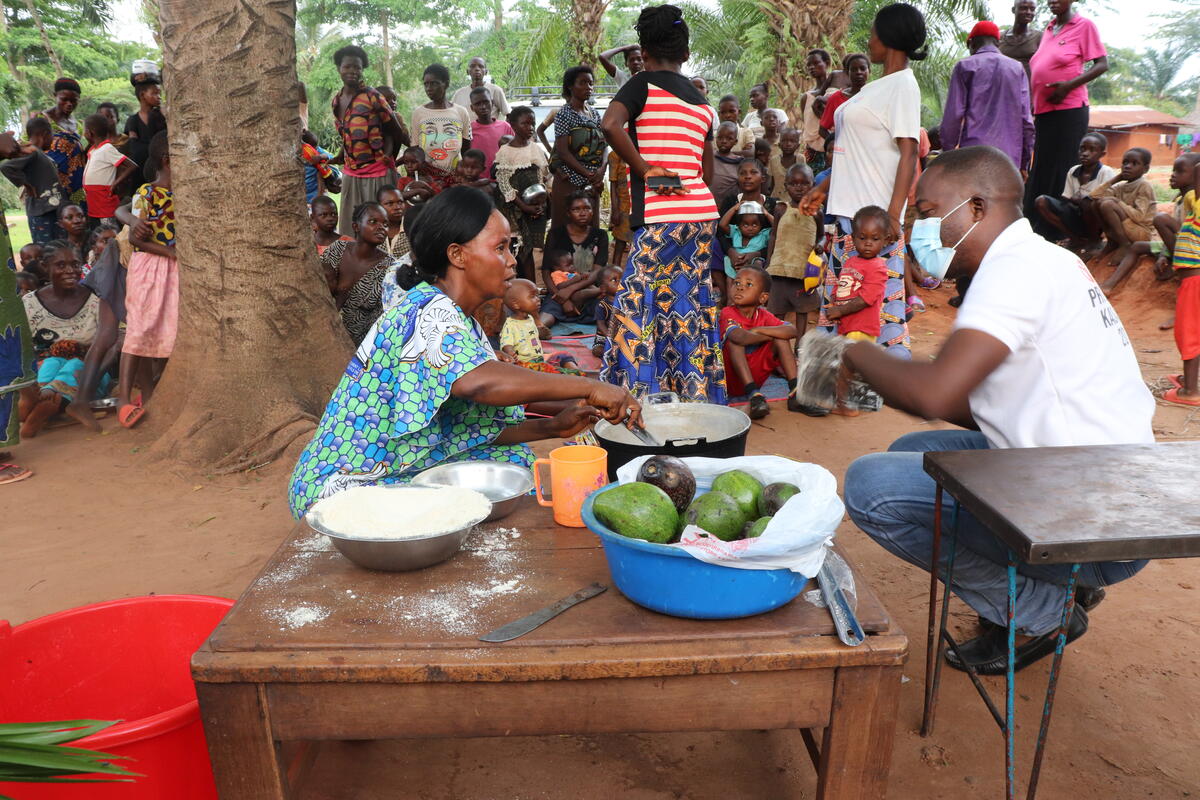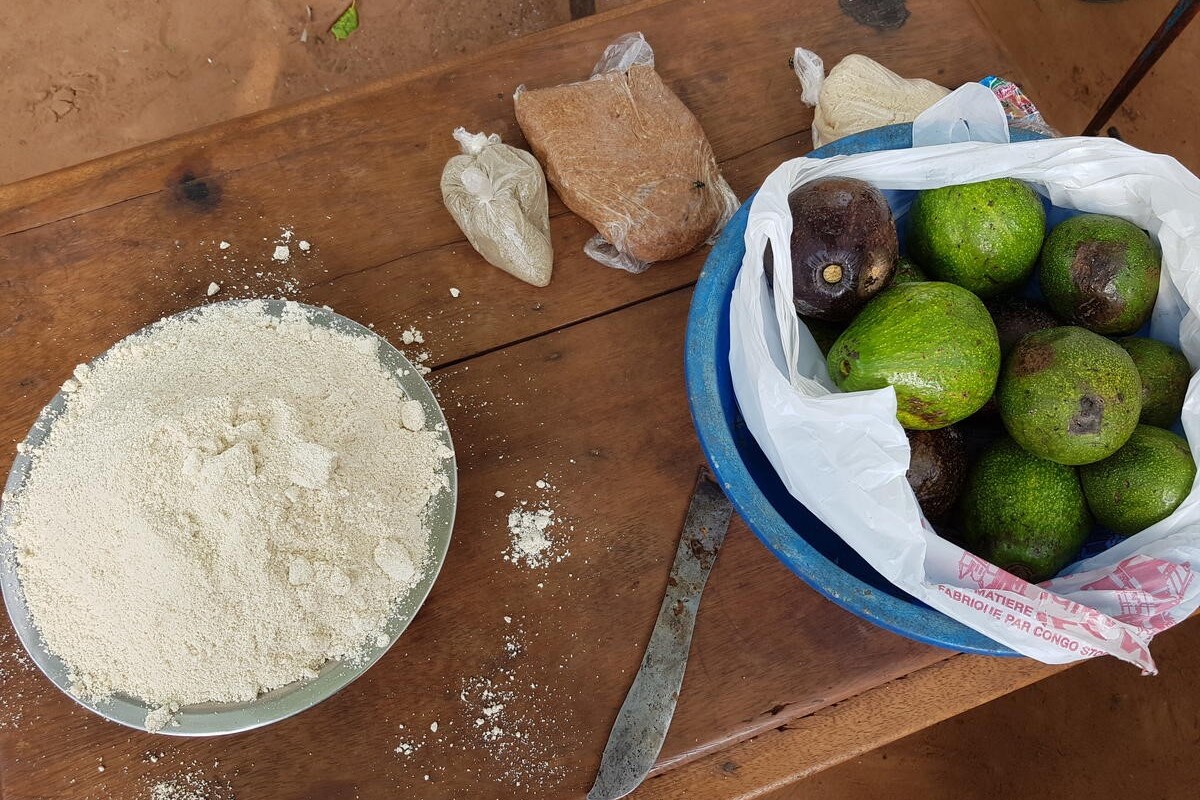2022/08/04
Caterpillar porridge mixes local ingredients to feed hungry children in central DRC
Community Volunteer Marceline*, 43, gives a cooking demonstration in East Kasaï, DRC
An unusual recipe is being shared by nutrition experts in a province in Democratic Republic of Congo (DRC) as part of a string of initiatives to combat high levels of child malnutrition in the world’s worst hunger crisis – a porridge packed with caterpillar protein.
An estimated 27 million people across the DRC – or 28% of the population – are experiencing crisis levels of acute food insecurity, and the country currently hosts the largest number of highly food insecure people in the world.
With hunger and food prices rising, families are being taught to make a cheap, accessible and highly nutritious locally sourced dish called Musabu, which combines caterpillar protein powder, oil, corn flour and avocado puree in a porridge. The recipe is packed with nutrients and vitamins and is particularly helpful in giving children under five the fats and proteins they need to overcome malnutrition.
The caterpillar protein powder is made from ground Massamba and Binkubala caterpillars, which are harvested locally in the province of East Kasaï in central southern DRC. After being sorted for size and quality, they are grilled for 5 to 10 minutes then ground in a mortar. The resulting high-protein and high-energy flour is then sieved to create a fine caterpillar powder.
Marceline*, 43, is a community volunteer working in the town of Tshilengue in East Kasaï. With the support of Save the Children, Marceline runs cooking demonstrations in villages to show mothers and grandmothers how to source ingredients and then make Musabu themselves for their children. Marceline says:
“The recipe has been shared with us and, in turn, we help the mothers and carers in the families to reproduce the recipe. All the products we use are available in nature, in our fields, so they are easily accessible.
“We use corn flour. We add caterpillar protein powder. We have a lot of caterpillars here, and then palm oil, a bit of sugar, salt, and avocado puree at the end. The children love it. Some of them always come back to ask more, so we’re happy about that.
“Mothers manage to make the recipe at home, and sometimes they come back to us to share amended versions of the recipe but always with local ingredients and rich in nutrients for the children. We find that the children are doing well, they are less and less emaciated.”
A recent nutrition assessment in the DRC showed that nearly 860,000 children under the age of five and nearly 470,000 pregnant or lactating women were likely to suffer from acute malnutrition in 2022, with more than 200,000 of those children expected to be severely malnourished and requiring urgent treatment to survive.
East Kasaï is one of the worst affected areas, where high levels of malnutrition in children are often the result of caregivers lacking knowledge on what constitutes a balanced diet, as well as poverty and rising food costs. Many families are forced to limit their meals, or their variety, missing out on critical vitamins and minerals.
Amavi Akpamagbo, Save the Children’s Country Director in DRC, said:
“With a global hunger crisis putting pressure on food and aid systems around the world, our teams are constantly looking for new ways to ensure malnourished children have the food they need to survive and thrive. A major part of the solution is to support communities to find local solutions to fight child malnutrition and reduce the number of cases of acute and severe acute malnutrition.
“However, the situation in DRC remains deeply worrying. Last year, less than 60% of children with acute malnutrition had access to treatment, while the preliminary analysis for 2022 suggests this number is going down.”
Save the Children is running cooking demonstrations along with a suite of activities across DRC to combat rising rates of child malnutrition. These include running nutrition screenings, so malnourished children can be referred early to health centres for rapid and appropriate treatment. Save the Children also runs programmes across the country to promote breastfeeding and good feeding practices, as well as supporting mothers and children to access emergency health support when needed.
*Names changed to protect privacy



